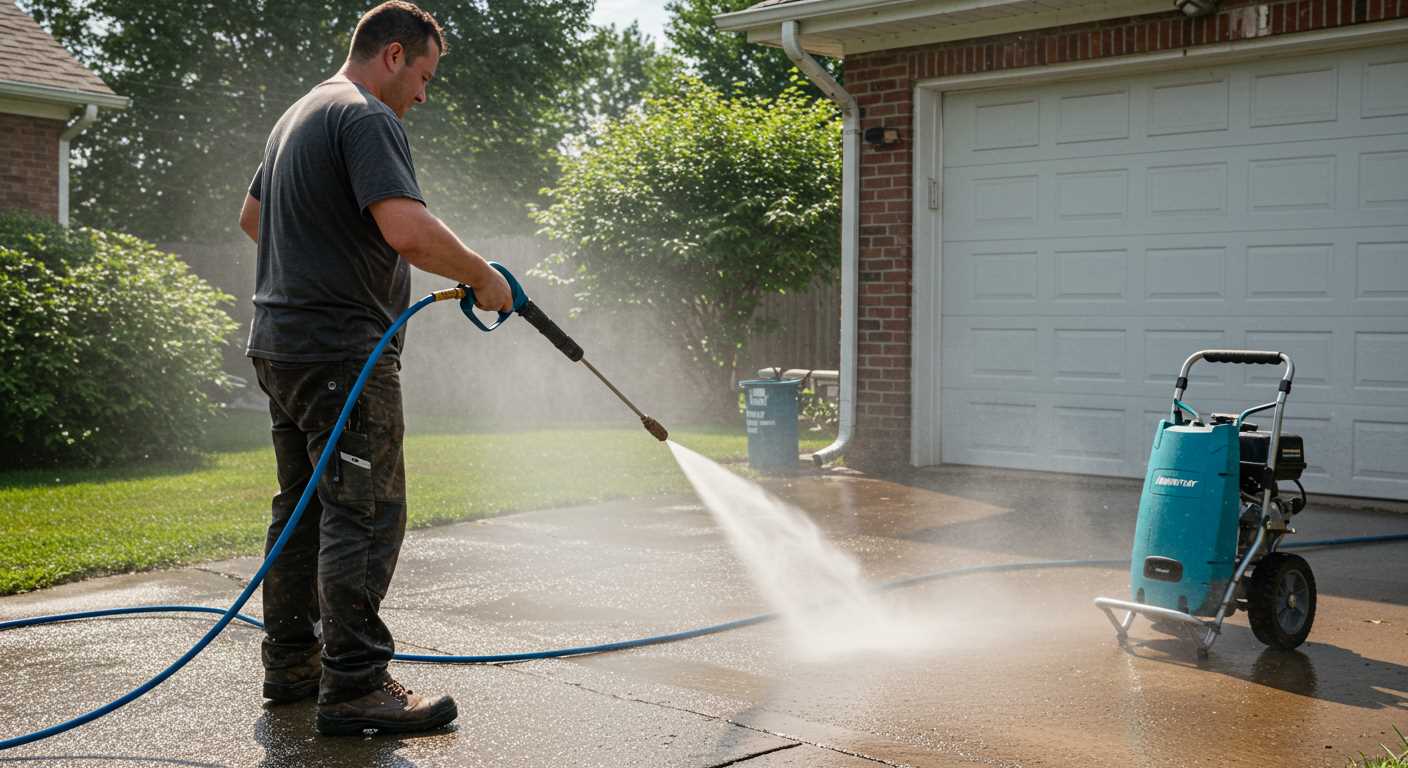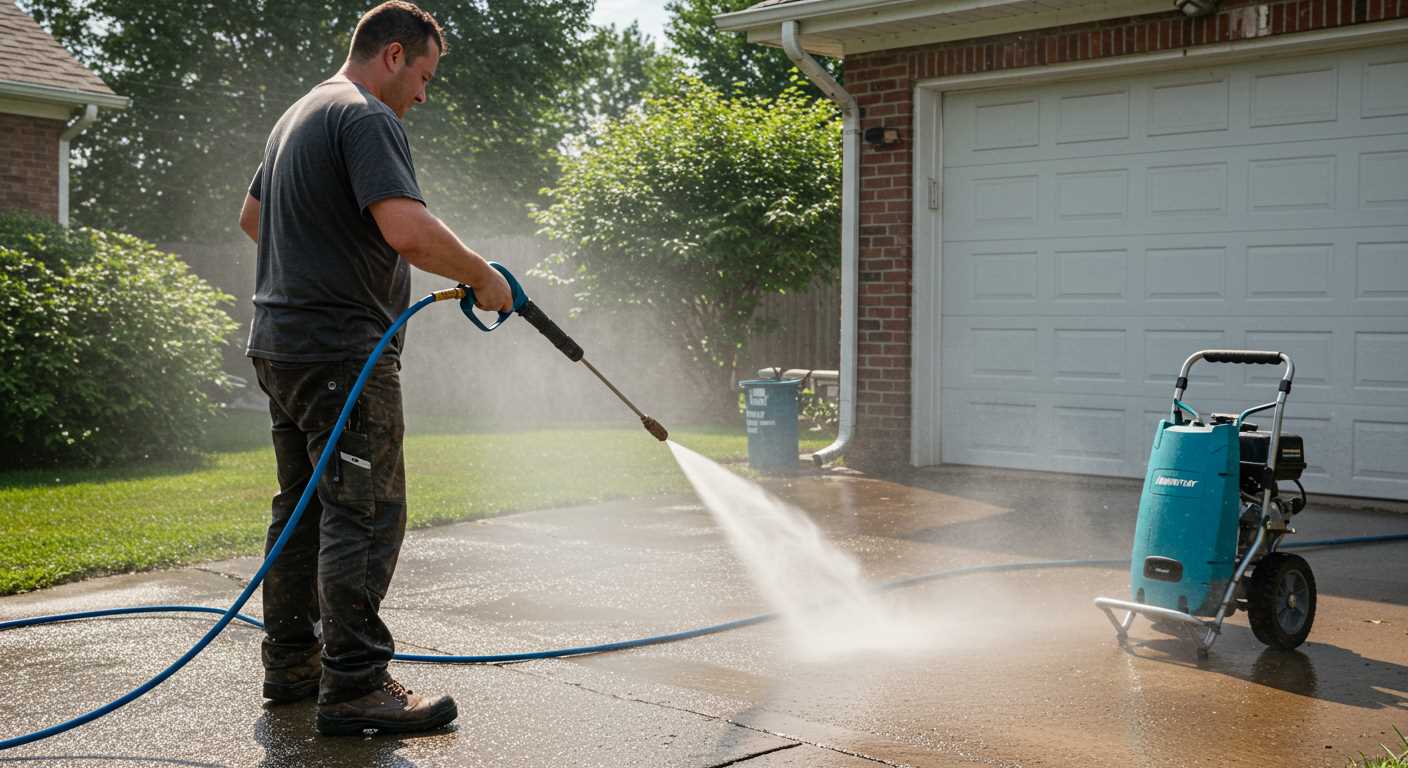




Absolutely feasible to connect a high-pressure cleaner to a container of water. In my years of experience in the cleaning equipment industry, I’ve encountered numerous scenarios where users leverage this method, especially in areas lacking direct access to a water supply. It’s a straightforward solution that can yield excellent results.
One critical factor to consider is ensuring the container is large enough to accommodate the water demands of the machine. Typically, these devices require a minimum flow rate to function optimally. A standard 20-litre bucket can suffice for smaller tasks, but larger jobs may necessitate a more substantial reservoir to prevent interruptions.
Another aspect is the suction capability of the model in question. Some machines are designed specifically to draw water from external sources, while others might require modifications or additional accessories. It’s beneficial to check the manufacturer’s recommendations to ensure compatibility and avoid any operational issues.
Moreover, always ensure that the inlet filter is clean to prevent debris from entering the system. I’ve seen too many users overlook this detail, leading to clogs and reduced performance. Regular maintenance of the filter can significantly enhance the longevity and efficiency of the equipment.
In my experience, using a container not only provides flexibility but also allows for eco-friendlier cleaning practices, reducing water waste. So, if you’re in a pinch or looking for alternatives, filling a bucket and connecting it to your cleaner can be a practical and efficient solution.
Compatibility of a Karcher Pressure Cleaner with a Water Container
Absolutely, hooking up a Kärcher cleaner to a water container is feasible. A simple method involves using a suction hose to draw water from the container. This setup is particularly advantageous in areas where a direct water source isn’t available. It’s crucial to ensure that the water is clean and free from debris to avoid damaging the unit.
Setting Up the System
To initiate, you’ll need a compatible suction hose. Many Kärcher models come with such an accessory, or they can be purchased separately. Attach one end of the hose to the cleaner’s water intake and place the other end into your chosen container. It’s wise to ensure the hose remains submerged to facilitate optimal water flow. If the water container is large, a small submersible pump can assist in maintaining a steady supply.
Performance Considerations
While this method is practical, be mindful of the pressure and flow rate. Using a container might result in slightly lower performance compared to direct connection to a tap. Regular checks for clogs and obstructions in the hose are recommended to maintain efficiency. When working with different surfaces, adjust the nozzle settings accordingly, as the cleaner may behave differently without a direct water supply.
From my experience, keeping the water clean and ensuring a proper setup can lead to satisfactory results, even in less-than-ideal conditions. Always remember to follow the manufacturer’s guidelines for the best outcomes.
Understanding the Karcher Pressure Washer’s Functionality
Operating this cleaning tool requires a grasp of its mechanics. The unit draws water from a source, and the electric motor powers the pump, creating the necessary pressure. This process allows the device to deliver a stream strong enough to tackle grime and dirt effectively. However, not all water sources are equal; the quality and pressure of the input water can impact performance.
Water Source Importance
The quality of the water supply matters significantly. If the source is a bucket or a container, ensure the water level remains above the inlet filter to avoid air intake, which could lead to the pump running dry. Running the unit without adequate water can cause severe damage to the internal components. I’ve seen too many users overlook this detail, resulting in costly repairs.
Adaptation and Accessories
Using an alternative water source often requires specific tools. Consider a suction hose attachment designed to draw water from a bucket. This accessory can help maintain consistent flow while preventing air locks. During tests, I found that using a larger container reduces the frequency of refills, enhancing the overall cleaning experience. Always check compatibility with your model for optimal performance.
Compatibility of Karcher Models with Bucket Systems
Operating different Karcher models alongside a bucket system is feasible, but specific details vary. Here’s what I’ve learned over the years regarding compatibility and practical use.
Model-Specific Insights
- K2 Series: This entry-level model can function well with a bucket setup. Simply connect the suction hose to the water inlet. It’s lightweight, making it easy to manoeuvre.
- K3 and K4 Series: These mid-range options offer a good blend of power and efficiency. Both can draw water from a bucket, although it’s crucial to ensure the hose is submerged sufficiently to avoid air intake.
- K5 and K7 Series: High-performance models like these excel in demanding tasks. They can be adapted for bucket use, but I recommend using a filter to prevent debris from entering the system, which can affect longevity.
Practical Tips for Operation
- Always ensure the suction hose is adequately submerged to maintain a steady flow of water.
- Utilise a non-return valve on the inlet to prevent backflow, especially in higher-end models.
- Consider using a bucket with a larger capacity for extended cleaning sessions, minimizing the need for frequent refills.
- Regularly check the hose for kinks or blockages that could impede performance.
In my experience, adapting these machines for bucket use can enhance portability and convenience. However, it’s vital to maintain proper water intake to ensure optimal functionality and avoid potential damage. Always refer to the user manual for specific guidelines related to your model.
Setting Up a Bucket for Use with a Pressure Washer
For optimal performance, first ensure the bucket is clean and free from debris. I recommend using a standard 5-gallon bucket, as it provides ample water supply without being cumbersome. Fill it with fresh water, and if you’re tackling tough stains, consider adding a suitable detergent. Just be cautious; not all cleaning agents are compatible with every model.
Next, attach a submersible pump to the bucket. This pump will draw water effectively, allowing the system to function smoothly. Ensure that the pump’s hose is securely connected to the inlet of your equipment, avoiding any leaks that could reduce pressure.
During my time testing various models, I discovered that using a high-quality turbo nozzle for electric pressure washer enhances cleaning efficiency. The nozzle helps create a more concentrated spray, especially beneficial for stubborn grime.
Lastly, monitor the water level in the bucket. Running the system with low water can lead to overheating and potential damage. Keeping the bucket filled will ensure consistent performance and longevity of your machine.
Water Supply Considerations When Using a Bucket
Using a bucket as a water source requires attention to a few key factors to ensure optimal operation. First, ensure the bucket is large enough to accommodate the flow rate of the device. A standard 10-litre bucket may not suffice for extended use, as it can run dry quickly. Ideally, opt for a larger container to maintain a consistent supply.
Next, consider the height of the water in the bucket. The inlet filter should be submerged adequately to prevent air from entering the system. If the water level drops too low, it may lead to cavitation, causing damage to the pump. A simple solution is to monitor the water level regularly or use a larger bucket that reduces the frequency of refills.
Water Quality and Temperature
Water quality plays a significant role in the longevity of your equipment. Avoid using muddy or heavily chlorinated water, as impurities can clog filters and damage internal components. If the water is too hot, it can also affect the seals and hoses, leading to premature wear. Ideally, use fresh, cool water for best results.
Connecting the System
Proper connection between the bucket and the device is vital. Ensure that the hose is securely attached to prevent leaks, which can reduce water pressure and lead to inefficient performance. An adapter may be necessary for certain models to facilitate a tight fit. Always check for compatibility before proceeding.
Lastly, experimenting with different flow rates can help optimise performance. Some models can operate effectively at lower rates, reducing water consumption while still achieving desired cleaning results. Testing different settings allows for efficient use of resources while maintaining effectiveness.
Benefits and Limitations of Using a Bucket with a Pressure Washer
Employing a bucket for water supply can streamline the cleaning process, especially in locations where tap water access is limited. The primary advantage lies in portability; transporting a bucket is straightforward, allowing for flexibility in various cleaning scenarios. Additionally, using a bucket can conserve water, particularly when employing a nozzle designed for car washing, such as the best car wash nozzle for pressure washer. This setup enables precise application, minimising wastage.
Benefits
One benefit I’ve noticed is the ability to use warm water. Filling a bucket with heated water enhances cleaning efficacy, especially for greasy surfaces. Furthermore, the reduced noise level is a plus; working with a bucket can be quieter than drawing directly from a hose, creating a more pleasant experience.
Limitations
However, several limitations exist. The most significant drawback is the limited water supply. A standard bucket holds around 10 litres, which may not suffice for extensive tasks, leading to frequent refills. This can interrupt workflow and slow down progress. Additionally, the pressure may vary based on water level, affecting performance. Lastly, using a bucket may require more effort for setup and management, particularly during larger cleaning projects where continuous operation is preferable.
Maintenance Tips for Using a Pressure Washer with a Bucket
Regular upkeep of the equipment ensures longevity and optimal performance. After each session, inspect hoses for leaks or cracks. Replace any damaged components immediately to prevent further issues.
Cleaning the Filter
Clogged filters can impede water flow. Rinse the filter regularly, especially after using water from a bucket. Debris may accumulate more quickly in this setup.
Storage Practices
Store the unit in a dry location, avoiding exposure to extreme temperatures. Coiling hoses neatly prevents kinks that could lead to damage. Keep the nozzle and attachments in a designated place to prevent loss.
| Maintenance Task | Frequency |
|---|---|
| Inspect hoses for damage | After every use |
| Clean the filter | Weekly or after heavy use |
| Check nozzle for blockages | Before each use |
| Store properly | Always |
Utilising a bucket can lead to sediment buildup in the water supply. Ensure the bucket is clean before filling. This will help maintain the integrity of the machine’s internal parts.
Lastly, keep an eye on the water level in the bucket during operation. If it runs dry, it can cause the motor to overheat. Make it a habit to check periodically for uninterrupted performance.



.jpg)
.jpg)
.jpg)


